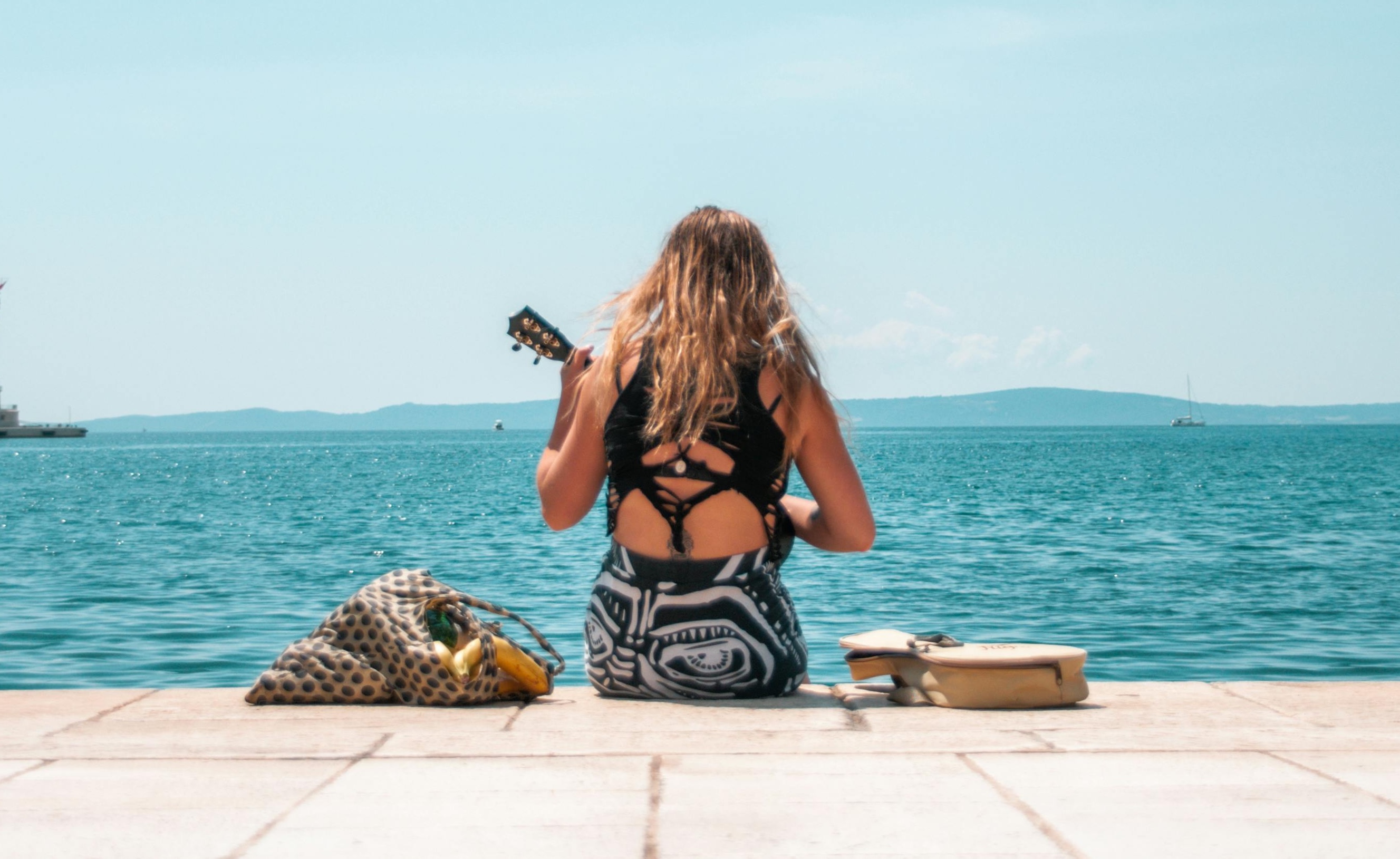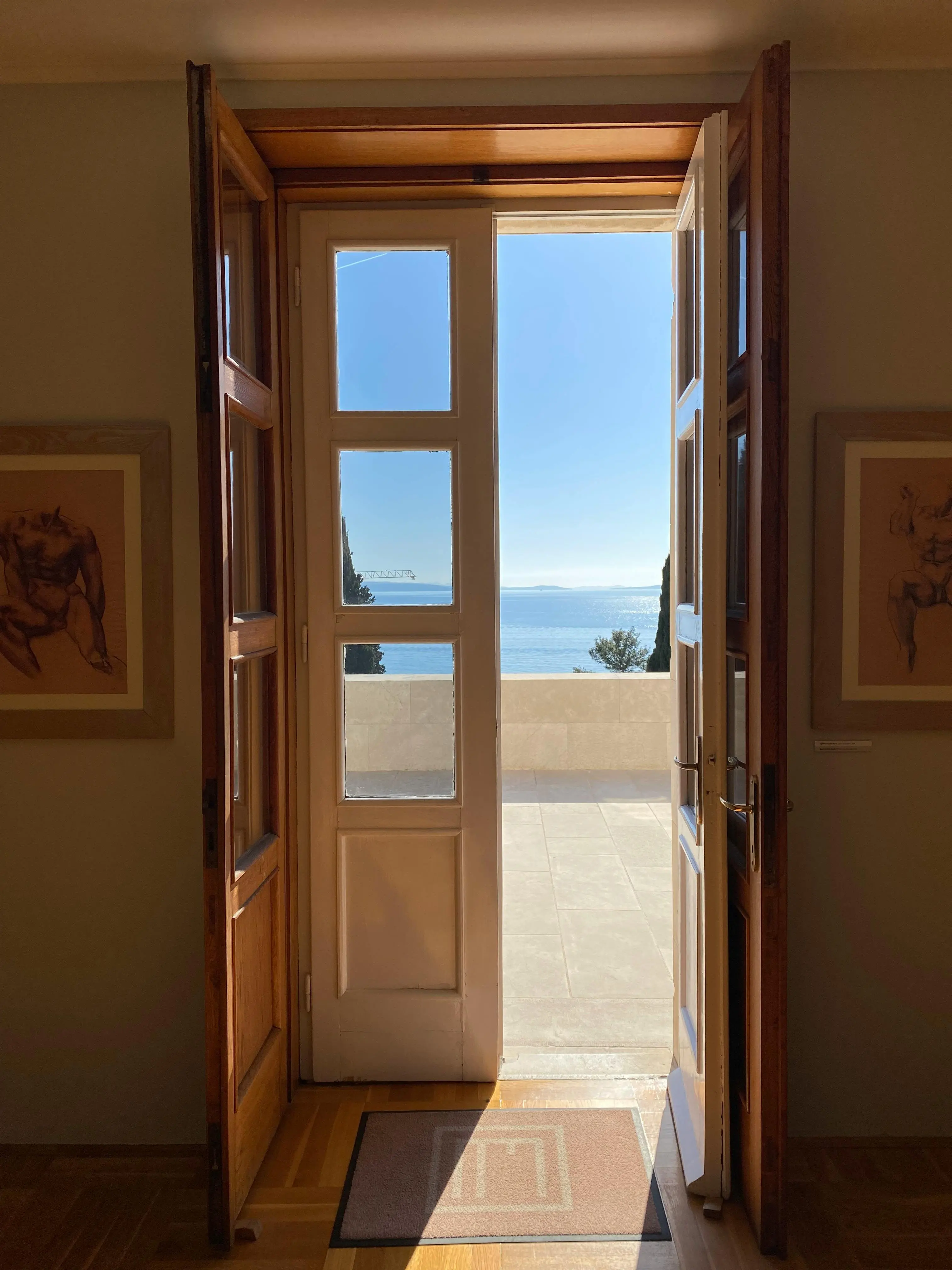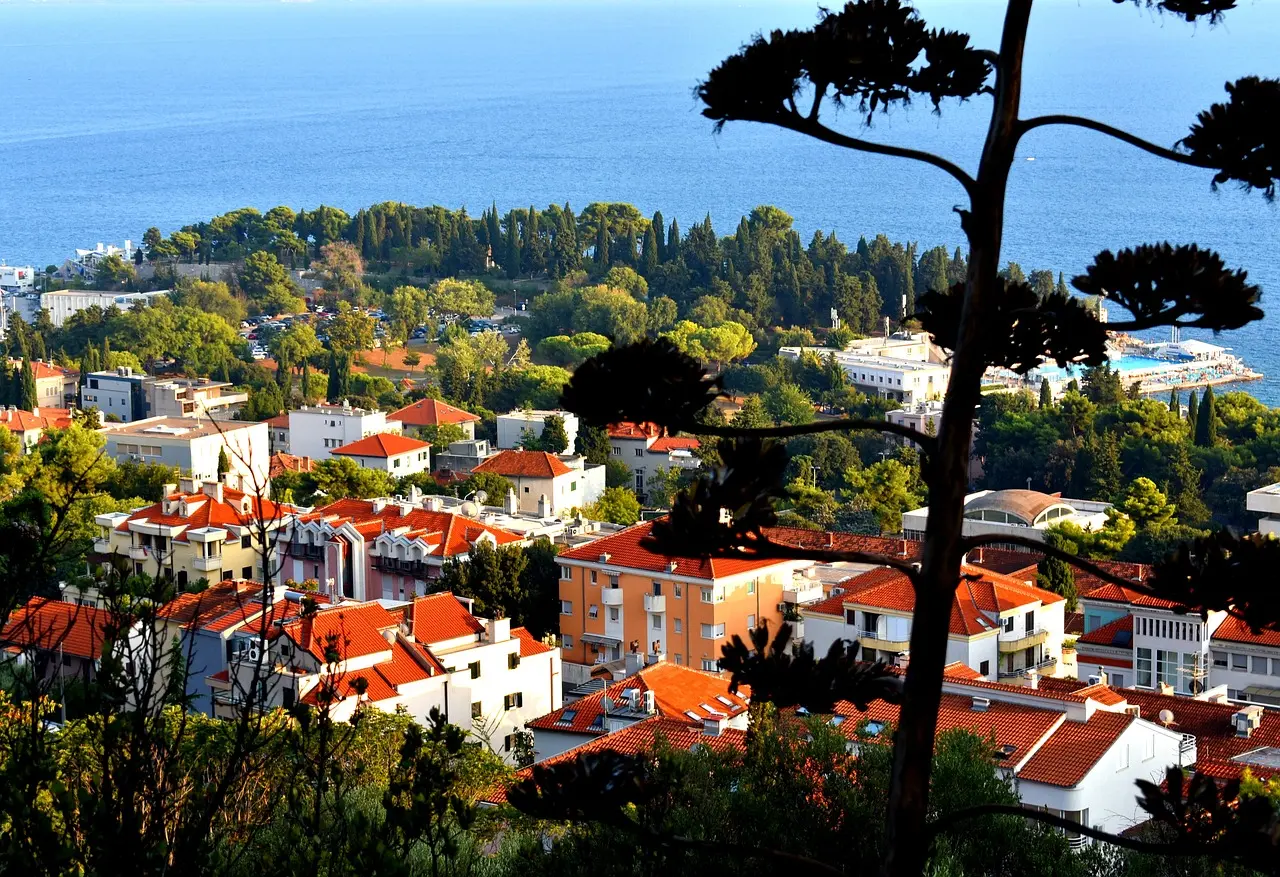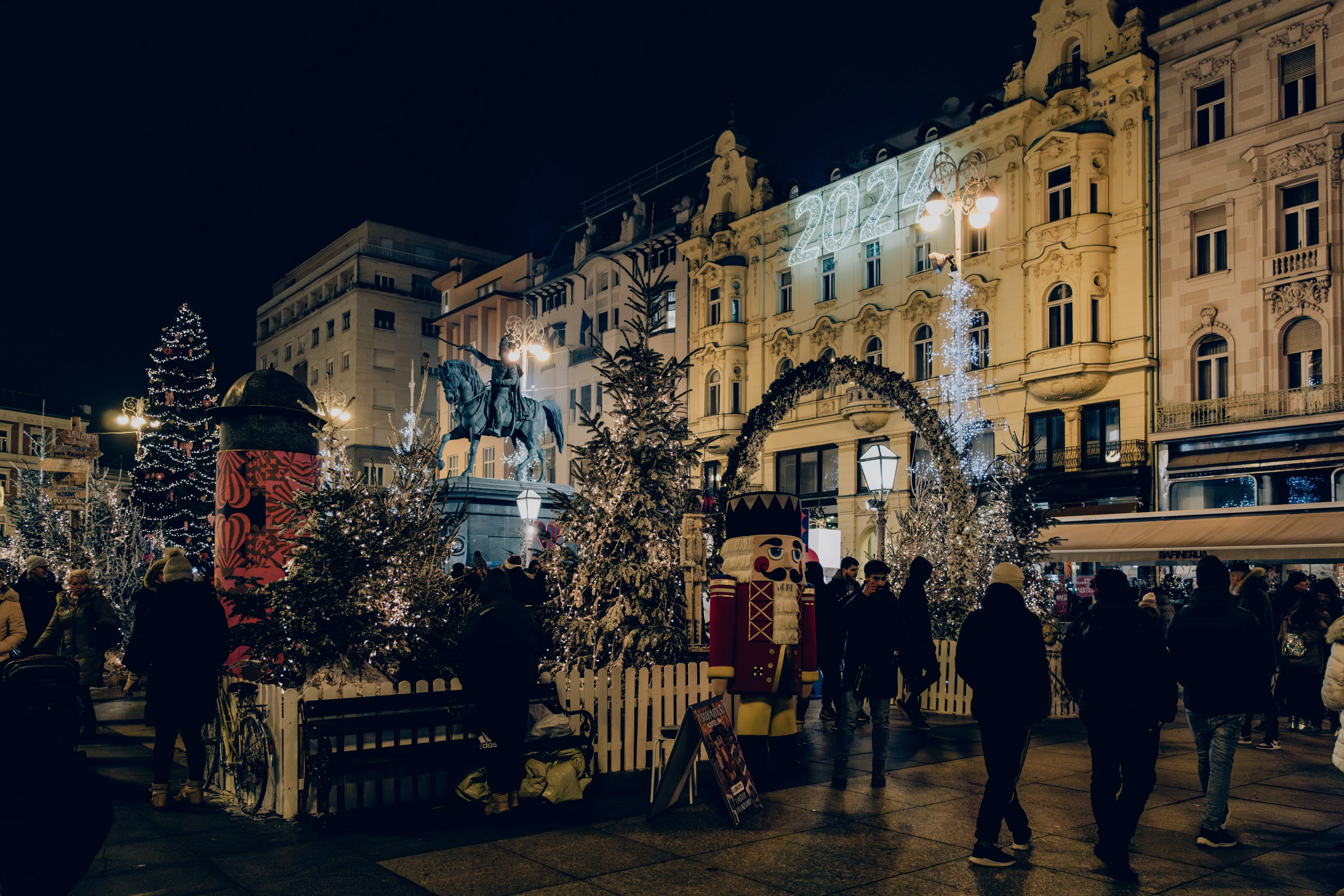When is the Best Time to Visit Croatia's Coast?
September - 2024

Are you dreaming of crystal-clear waters, sun-drenched beaches, and charming coastal towns? Croatia's stunning coastline is calling your name! But when should you pack your bags and head to this Mediterranean paradise?
Figuring out the best time to visit Croatia can make or break your vacation experience. From the bustling streets of Split to the serene winter landscapes, each season offers a unique flavor of Croatian coastal life.
You'll discover that the best time to go to Croatia depends on what you're looking for in your trip. Whether you're chasing the summer sun, seeking tranquil off-season vibes, or hoping to score great deals, Croatia has something to offer year-round. This guide will walk you through the pros and cons of each season, helping you decide when to visit Croatia's coast. We'll cover everything from the hottest months for beach-goers to the quieter periods perfect for exploring historic sites without the crowds. So, let's dive in and find your ideal time to experience the magic of Croatia's coastline!
Summer Sun and Crowds (June-August)
When you think about the best time to visit Croatia, summer often comes to mind. From June to August, the country's coastal regions transform into a bustling paradise. This is the peak tourist season, drawing visitors from around the globe to experience Croatia's sun-soaked beaches and vibrant atmosphere.
Peak tourist season
During these months, you'll find Croatia at its liveliest. The streets of popular destinations like Split and Dubrovnik are teeming with tourists, creating a vibrant and energetic atmosphere. However, this popularity comes with a price. You'll need to contend with larger crowds, which can make exploring famous sites and attractions more challenging. To make the most of your visit, it's wise to book your accommodations, activities, and travel arrangements well in advance.

Coastal attractions
Summer in Croatia offers the perfect opportunity to enjoy its stunning coastline. With temperatures ranging from 25°C to 35°C (77°F to 95°F), it's ideal for swimming in the crystal-clear waters of the Adriatic Sea. The beaches are at their most inviting, and coastal towns come alive with festivals and events. For instance, the Dubrovnik Summer Festival in July and August showcases theater, music, and dance performances against the backdrop of the city's historic streets.
Island hopping opportunities
One of the biggest draws of visiting Croatia in summer is the chance to go island hopping. With ferries and catamarans running frequent services, you can easily explore the country's beautiful islands. Popular destinations like Hvar, Brač, and Korčula are at their most accessible during this time. However, keep in mind that ferry tickets can sell out quickly, especially for popular routes. To avoid getting stranded, it's best to book your island-hopping itinerary in advance.
While summer offers the quintessential Croatian coastal experience, it's important to be prepared for the drawbacks. Prices for accommodations and activities tend to soar during this period, and the most popular attractions can get uncomfortably crowded. If you decide to visit during the summer months, consider exploring lesser-known islands or coastal towns to escape the worst of the crowds and enjoy a more relaxed Croatian summer experience.
Spring and Fall Sweet Spots (April-May & September-October)
If you're wondering when to go to Croatia for the perfect balance of pleasant weather and fewer crowds, look no further than the shoulder seasons. Spring (April-May) and fall (September-October) offer a sweet spot for travelers seeking to experience the best of Croatia's coast without the summer rush.
Mild weather benefits
During these months, you'll enjoy mild, sunny days that are ideal for exploring. In spring, temperatures range from 17°C to 23°C (62.6°F to 73.4°F), perfect for outdoor activities. The weather in fall is equally inviting, with September temperatures averaging between 18°C and 24°C (64.4°F to 75.2°F). These comfortable conditions make it a great time to visit Croatia, allowing you to soak in the beauty of the Adriatic coast without the scorching summer heat.

Reduced crowds
One of the biggest perks of visiting during the shoulder seasons is the notable decrease in tourist numbers. You'll find that popular destinations like Split and Dubrovnik are far less crowded, giving you a chance to explore historic sites and coastal towns at a more relaxed pace. This also means you can enjoy Croatia's stunning beaches and islands without the summer throngs, making for a more peaceful and authentic experience.
Outdoor activities
Spring and fall are perfect for outdoor enthusiasts. With the pleasant weather, you can make the most of Croatia's natural beauty. It's an excellent time for hiking in national parks, where you'll be treated to lush landscapes and flowing waterfalls. Cycling along the coast or through picturesque countryside is another popular activity during these months. For water lovers, September offers warm sea temperatures around 23°C (73.4°F), ideal for swimming and water sports.
To make the most of your visit during these sweet spot seasons, consider exploring lesser-known gems along the coast or venturing inland. You'll find that most attractions, restaurants, and accommodations are open, but with more reasonable prices compared to the peak summer months. Whether you're looking to relax on uncrowded beaches or embark on outdoor adventures, spring and fall offer the best time to visit Croatia's coast for a truly memorable experience.

Winter Wonders (November-March)
When you're considering the best time to visit Croatia, don't overlook the winter months. From November to March, Croatia transforms into a magical winter wonderland, offering a unique experience for those willing to brave the cooler temperatures.
Off-season charm
Winter in Croatia brings a different kind of beauty to the coastal regions. While the beaches may be too chilly for swimming, you'll find the cities and towns have a quiet, authentic charm. The crowds thin out, giving you a chance to explore historic sites and coastal towns at a more relaxed pace. This is the perfect time to visit Croatia if you're looking to experience the country like a local.
In cities like Split and Dubrovnik, you'll discover a more intimate atmosphere. Wander through the narrow streets and ancient architecture without the summer throngs, allowing you to appreciate the beauty of these coastal gems in peace. Keep in mind that some restaurants and attractions may have limited hours or be closed for the season, so it's wise to plan ahead.
Christmas markets
One of the highlights of visiting Croatia in winter is the enchanting Christmas markets. Zagreb, the capital city, hosts one of the best Christmas markets in Europe. From early December through the New Year, the city comes alive with festive decorations, twinkling lights, and the aroma of mulled wine and traditional treats.
As you explore the markets, you'll find stalls selling handcrafted gifts, local delicacies, and warming drinks. Don't miss out on trying fritule, delicious fried dough balls dusted with powdered sugar – a Croatian holiday favorite. The atmosphere is magical, with ice skating rinks, live music, and carolers adding to the festive spirit.

Coastal cities in winter
While the coast may be quieter in winter, it still has its charms. Cities like Split and Zadar take on a different character, with fewer tourists and a more relaxed vibe. You can explore the historic sites, such as Diocletian's Palace in Split, without the summer crowds. The cooler weather is perfect for sightseeing and enjoying the local cuisine in cozy restaurants.
For a truly unique experience, consider visiting Plitvice Lakes National Park in winter. The frozen waterfalls and snow-covered landscapes create a breathtaking winter wonderland that's vastly different from its summer appearance.
Every season tells a story
Croatia's coastal charm offers a unique experience in every season, each with its own allure and advantages. From the vibrant summer months to the tranquil winter wonderland, visitors can find their perfect Croatian getaway throughout the year. The shoulder seasons of spring and fall provide an ideal balance of pleasant weather and fewer crowds, making them excellent choices for those seeking a more relaxed exploration of Croatia's coastal treasures.
Ultimately, the best time to visit Croatia's coast depends on your personal preferences and travel goals. Whether you're after sun-soaked beaches, cultural experiences, or off-season tranquility, Croatia has something to offer year-round. To truly experience the magic of this Mediterranean gem, consider planning a trip to Split, where you can immerse yourself in the city's rich history and stunning coastal beauty. Remember, each season in Croatia brings its own unique flavor, so choose the time that best suits your ideal coastal adventure.